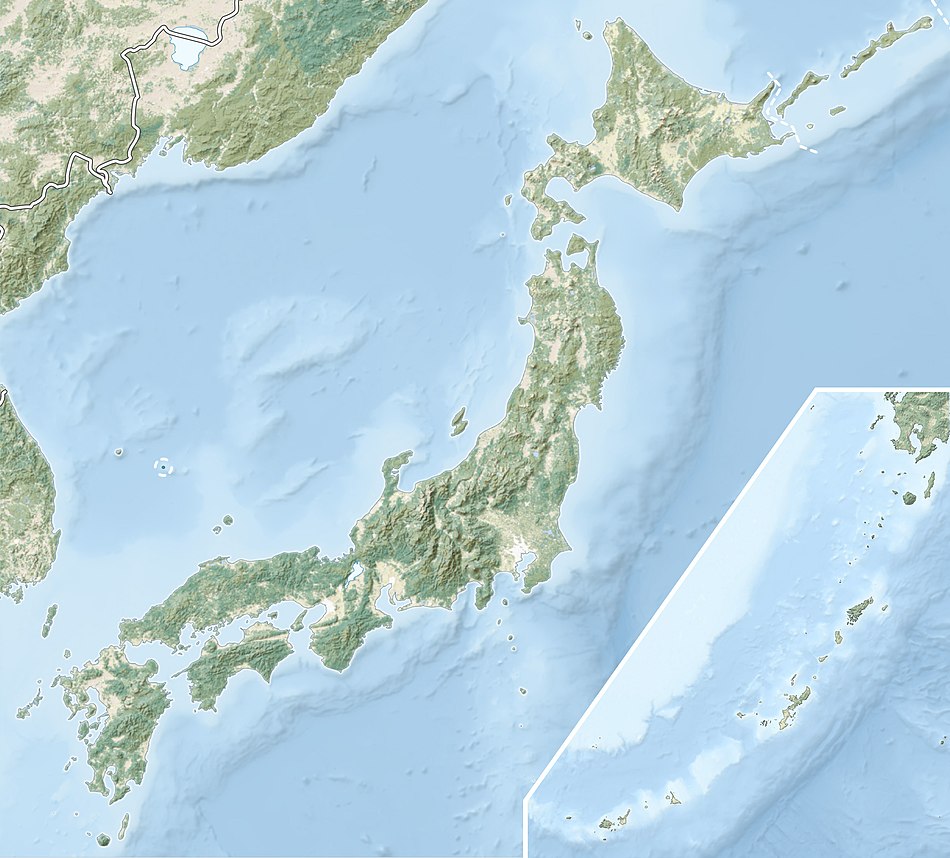
Sorachi Subprefecture is a subprefecture of Hokkaido Prefecture, Japan. As of 2004, its estimated population is 373,736 and its area is 6,558.26 km2.
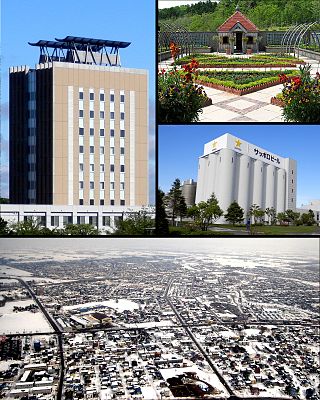
Eniwa is a city in Ishikari Subprefecture, Hokkaido, Japan. It is on the Ishikari plain, 8 km north of Chitose, and 26 km south of the prefectural capital Sapporo. It is reached through route 36 and the Chitose Railway Line. The town is separated into three major areas: Eniwa in the south, Megumino in the center, and Shimamatsu in the north.
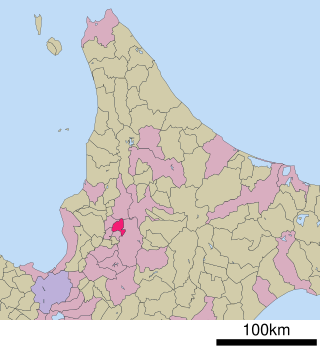
Akabira is a city located in central Sorachi Subprefecture, Hokkaido, Japan. The name is Ainu for "mountain ridge".

Ichinohe is a town located in Iwate Prefecture, Japan. As of 1 April 2020, the town had an estimated population of 12,053, and a population density of 40 persons per km² in 5645 households. The total area of the town is 300.03 square kilometres (115.84 sq mi).

Taihoku Prefecture was an administrative division of Taiwan created in 1920, during Japanese rule. The prefecture consisted of modern-day Keelung, New Taipei City, Taipei and Yilan County. Its government office, which is now occupied by the Control Yuan of Taiwan, was in Taihoku City.

Shintotsukawa is a town located in Sorachi Subprefecture, Hokkaido, Japan.

Sorachi is a district divided between Sorachi and Kamikawa Subprefectures, Hokkaido, Japan. As of 2004, the district has an estimated population of 53,011 and an area of 1,497.21 km2, giving a population density of 35.41 persons per square kilometer.
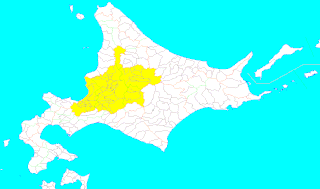
Ishikari Province was a short-lived province located in Hokkaidō. It corresponded to modern-day Ishikari Subprefecture minus Chitose and Eniwa, all of Sorachi Subprefecture and the southern half of Kamikawa Subprefecture excluding Shimukappu

Hideaki Sorachi is the pen name of a Japanese manga artist, most well known for his manga Gintama, which began serialization in 2003 and ended in 2019. He has also written numerous one-shots, including Dandelion, for which he won the Tenkaichi Honourable Mention Manga Award in 2002. Sorachi's distinctive sense of humour and writing style has been the subject of academic research papers. As of February 2018, the Gintama manga has sold 55 million units in Japan.

Akaganeite, also written as the deprecated Akaganéite, is a chloride-containing iron(III) oxide-hydroxide mineral, formed by the weathering of pyrrhotite (Fe1−xS).

Kensuke Kazama was a Japanese photographer who photographed the one-time mining town of Yūbari, Hokkaidō.
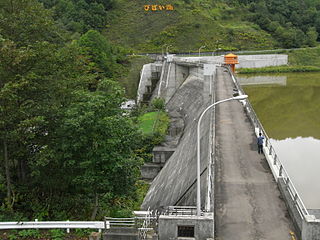
The Bibai Dam is a dam in Bibai, Hokkaidō, Japan. The Bibai Dam is constructed along the Mikawa River and is part of the Ishikari River water system.
Hokkaido Colliery and Railway Company was a company engaged in coal mining, railway operation and shipping in Hokkaidō, Japan.
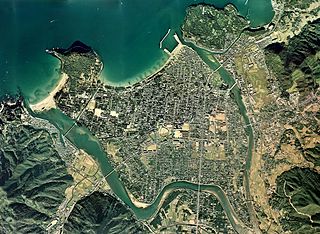
Sites of Japan's Meiji Industrial Revolution: Iron and Steel, Shipbuilding and Coal Mining are a group of historic sites that played an important part in the industrialization of Japan in the Bakumatsu and Meiji periods (1850s–1910), and are part of the industrial heritage of Japan. In 2009 the monuments were submitted jointly for inscription on the UNESCO World Heritage List under criteria ii, iii, and iv. The sites were accepted at the 39th UNESCO World Heritage session, under the condition to take measures "that allow an understanding that there were a large number of Koreans and others who were brought against their will and forced to work under harsh conditions ...", and again, such measures have yet to be implemented.
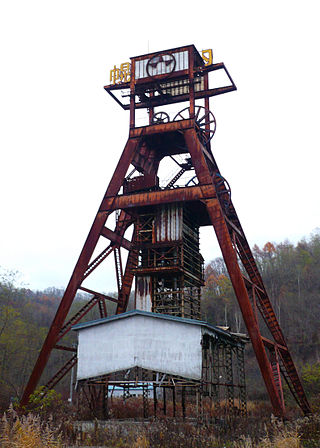
The Horonai coal mine is the oldest mine of the Ishikari coalfield of the Sorachi (Mikasa) mining region on the Japanese island of Hokkaido. Since its privatisation in 1889, the mine came under the management of the Hokutan company until its closure in 1989.

The Ishikari coal basin lies in the tertiary mountains of the mining region of Sorachi, east of the Ishikari Plain in central Hokkaido. These coal veins contain the largest quantity of coal of Japan. Because of its late discovery the historical role of the coalfield could not be compared with that of the Chikuho coalfield, but its economic importance since the Japanese industrial revolution is comparable with that of the southern Chikuhō coalfield.
Takikawa Museum of Art and Natural History opened in Takikawa, Hokkaidō, Japan in 1986. The collection includes works by Iwahashi Eien, Ichiki Masumi, and Ueda Sōkyū as well as the fossil type specimen of the Takikawa sea cow, discovered in the bed of the Sorachi River in 1980 and designated a Prefectural Natural Monument.

Hokkaidō Heritage is an initiative aimed at the valorization and transmission to the next generation of the tangible and intangible natural, cultural, historical, and industrial heritage of Hokkaidō, Japan. It is advanced by the Hokkaidō Heritage Council (北海道遺産協議会), an NPO, and endorsed by the prefectural government, amongst other bodies. Sixty-seven assets have been identified to date in three sessions, the first twenty-five on 22 October 2001, a further twenty-seven on 22 October 2004, and more recently, fifteen on 1 November 2018. The scheme does not include a formal system for management or preservation but is intended to be a citizen-led movement with the concomitant benefits of promoting tourism, fostering pride and a sense of belonging in local communities, developing human capital and potential, and the revitalization of local economies.
